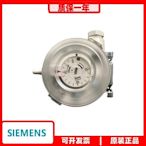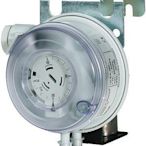壓差開關 相關
廣告差壓,規格齊全,可量測正壓、連成壓、風速,適用於空氣、無腐蝕性液體. 差壓感測器/傳送器、差壓開關、風速感測、應用於空氣、各式氣體、各式液體
正壓防爆控制器、流量計、流量開關、壓力開關、溫度開關,嚴格品管,好評不斷! 專營各式工業儀錶、正壓防爆控制器、流量計、壓力開關、溫度開關,嚴格品管,好評不斷!
TMFC Type:
搜尋結果
 $620詢價DWYER德威爾ADPS-03/05/06/07/08-2-N空氣體微壓差開關風壓控GameOfThePower
$620詢價DWYER德威爾ADPS-03/05/06/07/08-2-N空氣體微壓差開關風壓控GameOfThePower $953廠家出貨特價中中央空調水壓壓差開關MPDS630MPDS650MPDS680麥克維爾水壓差開關晴天晴旗艦店
$953廠家出貨特價中中央空調水壓壓差開關MPDS630MPDS650MPDS680麥克維爾水壓差開關晴天晴旗艦店 $1705壓力傳感器 霍尼韋爾DPSN200A 400A 1000A 2500A代替DPS空氣壓差開關濾網差壓小熊樂購
$1705壓力傳感器 霍尼韋爾DPSN200A 400A 1000A 2500A代替DPS空氣壓差開關濾網差壓小熊樂購 $1782【熱賣精選】壓力傳感器西門子QBM81-3差壓傳感器QBM81-10QBM81-20空氣壓差開關QBM81-5Y6260111837
$1782【熱賣精選】壓力傳感器西門子QBM81-3差壓傳感器QBM81-10QBM81-20空氣壓差開關QBM81-5Y6260111837![壓力傳感器 原裝正品HUBA暖通風管道空氣微壓差開關國產型604氣體壓力傳感器 壓力傳感器 原裝正品HUBA暖通風管道空氣微壓差開關國產型604氣體壓力傳感器]() $440壓力傳感器 原裝正品HUBA暖通風管道空氣微壓差開關國產型604氣體壓力傳感器小熊樂購
$440壓力傳感器 原裝正品HUBA暖通風管道空氣微壓差開關國產型604氣體壓力傳感器小熊樂購![【公司貨】LEFOO力夫風壓差開關 LF32-05 50-500pa氣體差壓開關微壓差開關 【公司貨】LEFOO力夫風壓差開關 LF32-05 50-500pa氣體差壓開關微壓差開關]() $727【公司貨】LEFOO力夫風壓差開關 LF32-05 50-500pa氣體差壓開關微壓差開關極樂
$727【公司貨】LEFOO力夫風壓差開關 LF32-05 50-500pa氣體差壓開關微壓差開關極樂![中央空調水壓壓差開關MPDS630MPDS650S680代替麥克可用水壓差開關 中央空調水壓壓差開關MPDS630MPDS650S680代替麥克可用水壓差開關]() $800中央空調水壓壓差開關MPDS630MPDS650S680代替麥克可用水壓差開關台北鋪子-營業中
$800中央空調水壓壓差開關MPDS630MPDS650S680代替麥克可用水壓差開關台北鋪子-營業中![正品全新TEREN天潤壓差開關606.01000空氣濾網微差壓風壓開關包郵 正品全新TEREN天潤壓差開關606.01000空氣濾網微差壓風壓開關包郵]() $320正品全新TEREN天潤壓差開關606.01000空氣濾網微差壓風壓開關包郵工業地帶
$320正品全新TEREN天潤壓差開關606.01000空氣濾網微差壓風壓開關包郵工業地帶![壓差開關604空氣微差壓開關氣體流量差壓計風壓壓力變送傳感器 壓差開關604空氣微差壓開關氣體流量差壓計風壓壓力變送傳感器]() $387壓差開關604空氣微差壓開關氣體流量差壓計風壓壓力變送傳感器聚百貨
$387壓差開關604空氣微差壓開關氣體流量差壓計風壓壓力變送傳感器聚百貨![Dwyer德威爾ADPS-08/04/03/05/06/07-2-N氣體壓差開關風壓控制器 Dwyer德威爾ADPS-08/04/03/05/06/07-2-N氣體壓差開關風壓控制器]() $310Dwyer德威爾ADPS-08/04/03/05/06/07-2-N氣體壓差開關風壓控制器工業地帶
$310Dwyer德威爾ADPS-08/04/03/05/06/07-2-N氣體壓差開關風壓控制器工業地帶![LF32風壓差開關 空氣微壓差開關氣體控制傳感器風壓計風壓開關 LF32風壓差開關 空氣微壓差開關氣體控制傳感器風壓計風壓開關]() $980LF32風壓差開關 空氣微壓差開關氣體控制傳感器風壓計風壓開關Y9767535119
$980LF32風壓差開關 空氣微壓差開關氣體控制傳感器風壓計風壓開關Y9767535119![廠家出貨中央空調水壓壓差開關MPDS630MPDS650MPDS680麥克維爾水壓差開關 廠家出貨中央空調水壓壓差開關MPDS630MPDS650MPDS680麥克維爾水壓差開關]() $896廠家出貨中央空調水壓壓差開關MPDS630MPDS650MPDS680麥克維爾水壓差開關日常生活館
$896廠家出貨中央空調水壓壓差開關MPDS630MPDS650MPDS680麥克維爾水壓差開關日常生活館
In mathematics, the Laplace transform, named after its discoverer Pierre-Simon Laplace ( / ləˈplɑːs / ), is an integral transform that converts a function of a real variable (usually , in the time domain) to a function of a complex variable (in the complex-valued frequency domain, also known as s-domain, or s-plane ).
A plot of normal distribution (or bell-shaped curve) where each band has a width of 1 standard deviation – See also: 68–95–99.7 rule. Cumulative probability of a normal distribution with expected value 0 and standard deviation 1 In statistics, the standard deviation is a measure of the amount of variation of a random variable expected about its mean.
- Principles
- Construction
- Classification Parameters
- Applications
- History
- Bibliography
Ideal transformer
An ideal transformer is linear, lossless and perfectly coupled. Perfect coupling implies infinitely high core magnetic permeability and winding inductance and zero net magnetomotive force (i.e. ipnp − isns = 0).[c] A varying current in the transformer's primary winding creates a varying magnetic flux in the transformer core, which is also encircled by the secondary winding. This varying flux at the secondary winding induces a varying electromotive force or voltage in the secondary winding. Th...
Transformer EMF equation
If the flux in the core is purely sinusoidal, the relationship for either winding between its rms voltage Erms of the winding, and the supply frequency f, number of turns N, core cross-sectional area A in m2 and peak magnetic flux density Bpeak in Wb/m2or T (tesla) is given by the universal EMF equation: 1. E rms = 2 π f N A B peak 2 ≈ 4.44 f N A B peak {\displaystyle E_{\text{rms}}={\frac {2\pi fNAB_{\text{peak}}}{\sqrt {2}}}\approx 4.44fNAB_{\text{peak}}}
Polarity
A dot convention is often used in transformer circuit diagrams, nameplates or terminal markings to define the relative polarity of transformer windings. Positively increasing instantaneous current entering the primary winding's ‘dot’ end induces positive polarity voltage exiting the secondary winding's ‘dot’ end. Three-phase transformers used in electric power systems will have a nameplate that indicate the phase relationships between their terminals. This may be in the form of a phasordiagra...
Cores
Closed-core transformers are constructed in 'core form' or 'shell form'. When windings surround the core, the transformer is core form; when windings are surrounded by the core, the transformer is shell form. Shell form design may be more prevalent than core form design for distribution transformer applications due to the relative ease in stacking the core around winding coils. Core form design tends to, as a general rule, be more economical, and therefore more prevalent, than shell form desi...
Windings
The electrical conductor used for the windings depends upon the application, but in all cases the individual turns must be electrically insulated from each other to ensure that the current travels throughout every turn. For small transformers, in which currents are low and the potential difference between adjacent turns is small, the coils are often wound from enamelled magnet wire. Larger power transformers may be wound with copper rectangular strip conductors insulated by oil-impregnated pa...
Cooling
It is a rule of thumb that the life expectancy of electrical insulation is halved for about every 7 °C to 10 °C increase in operating temperature (an instance of the application of the Arrhenius equation). Small dry-type and liquid-immersed transformers are often self-cooled by natural convection and radiation heat dissipation. As power ratings increase, transformers are often cooled by forced-air cooling, forced-oil cooling, water-cooling, or combinations of these. Large transformers are fil...
Transformers can be classified in many ways, such as the following: 1. Power rating: From a fraction of a volt-ampere (VA) to over a thousand MVA. 2. Duty of a transformer: Continuous, short-time, intermittent, periodic, varying. 3. Frequency range: Power-frequency, audio-frequency, or radio-frequency. 4. Voltage class: From a few volts to hundreds...
Various specific electrical application designs require a variety of transformer types. Although they all share the basic characteristic transformer principles, they are customized in construction or electrical properties for certain installation requirements or circuit conditions. In electric power transmission, transformers allow transmission of ...
Discovery of induction
Electromagnetic induction, the principle of the operation of the transformer, was discovered independently by Michael Faraday in 1831 and Joseph Henry in 1832. Only Faraday furthered his experiments to the point of working out the equation describing the relationship between EMF and magnetic flux now known as Faraday's law of induction: 1. | E | = | d Φ B d t | , {\displaystyle |{\mathcal {E}}|=\left|{{\mathrm {d} \Phi _{\text{B}}} \over \mathrm {d} t}\right|,} where | E | {\displaystyle |{\m...
Induction coils
The first type of transformer to see wide use was the induction coil, invented by Irish-Catholic Rev. Nicholas Callan of Maynooth College, Ireland in 1836. He was one of the first researchers to realize the more turns the secondary winding has in relation to the primary winding, the larger the induced secondary EMF will be. Induction coils evolved from scientists' and inventors' efforts to get higher voltages from batteries. Since batteries produce direct current (DC) rather than AC, inductio...
First alternating current transformers
By the 1870s, efficient generators producing alternating current (AC) were available, and it was found AC could power an induction coil directly, without an interrupter. In 1876, Russian engineer Pavel Yablochkov invented a lighting system based on a set of induction coils where the primary windings were connected to a source of AC. The secondary windings could be connected to several 'electric candles'(arc lamps) of his own design. The coils Yablochkov employed functioned essentially as tran...
Beeman, Donald, ed. (1955). Industrial Power Systems Handbook. McGraw-Hill.Calvert, James (2001). "Inside Transformers". University of Denver. Archived from the original on May 9, 2007. Retrieved May 19, 2007.Coltman, J. W. (Jan 1988). "The Transformer". Scientific American. 258 (1): 86–95. Bibcode:1988SciAm.258a..86C. doi:10.1038/scientificamerican0188-86. OSTI 6851152.Coltman, J. W. (Jan–Feb 2002). "The Transformer [Historical Overview]". IEEE Industry Applications Magazine. 8 (1): 8–15. doi:10.1109/2943.974352. S2CID 18160717.Example of samples from two populations with the same mean but different variances. The red population has mean 100 and variance 100 (SD=10) while the blue population has mean 100 and variance 2500 (SD=50) where SD stands for Standard Deviation. In probability theory and statistics, variance is the expected value of the squared deviation from the mean of a random variable.
In probability theory and statistics, the exponential distribution or negative exponential distribution is the probability distribution of the distance between events in a Poisson point process, i.e., a process in which events occur continuously and independently at a constant average rate; the distance parameter could be any meaningful mono-dim...
History. See also. References. Further reading. External links. Chi-squared distribution. In probability theory and statistics, the chi-squared distribution (also chi-square or -distribution) with degrees of freedom is the distribution of a sum of the squares of independent standard normal random variables.
Pearson correlation coefficient. Several sets of ( x , y) points, with the correlation coefficient of x and y for each set. The correlation reflects the strength and direction of a linear relationship (top row), but not the slope of that relationship (middle), nor many aspects of nonlinear relationships (bottom).












